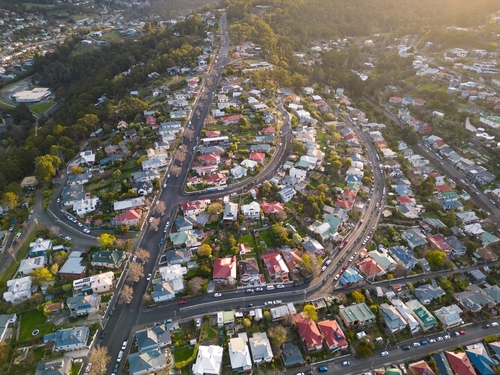For a Good Job by 30, Do This in Your 20s
New research shows which career paths pay off and why steps made between ages 20 and 26 are so critical
Skepticism about the value of college is growing, but earning a four-year degree by your mid-20s is the surest route to a good job by age 30.
That is a key takeaway from a new analysis by Georgetown University’s Center on Education and the Workforce that aims to identify the paths that bring people to good jobs. The findings are important as companies, individuals and families are trying to better understand how college degrees affect career outcomes.
Georgetown researchers examined government data for more than 8,000 Americans born in the early 1980s from adolescence through age 30. They identified 38 decision points that could influence workers’ ability to land what they deemed a good job by age 30—one that pays the minimum for economic self-sufficiency, a median annual salary of $57,000.
Pursuing a bachelor’s degree made more of a difference than any other decision that researchers analysed.
“The main road to a good job is still to go get the BA,” said Anthony Carnevale, who directs the Georgetown centre.
The researchers focused on people who didn’t go directly from high school to college, because the cohort that graduated college in their early 20s had a high rate of good job outcomes.
Millions of people start bachelor’s degrees, but don’t finish them by their mid-20s. Those non-finishers have a 40% chance of getting a good job by 30, Georgetown data show. If they eventually earned a bachelor’s degree by age 26, they would have a higher chance—56%—of getting a good job, Georgetown estimates.
Even starting a bachelor’s degree by age 22 made a difference for some high-school graduates. People who pursued an associate degree, skills training or certificate had a 29% shot at a good job, compared with 23% for those who didn’t pursue higher education by that age.
College Debt—and Payoff
Escalating college costs have complicated people’s decision to attend, said Zack Mabel, an author of the Georgetown report and a research professor of education and economics at the university.
The expected payoff to getting a bachelor’s degree is higher than it has ever been, Prof. Mabel said, but added, “with the rising cost of college, and the increasing debt that students and families have to take on, the risk of pursuing higher education is higher than it’s ever been.”
Some 56% of respondents to a recent Wall Street Journal-NORC poll said a four-year degree isn’t worth it, because students often leave with large student debt loads and no specific job skills. Ten years ago, 40% of people polled thought a college degree wasn’t worth it.
Dany Nguyen, 30 years old, started a job in Austin last year as a software developer for General Motors after a decade of working while going to school.
Mr. Nguyen, who graduated from high school in 2010, said he spent four years stocking shelves at a store, running food orders at a restaurant and working at a banquet hall while taking community-college classes at night. Though exhausting, the arrangement ensured he could pay his bills and tuition. He got skills and connections that led to better paying roles, he said, including an inventory job with a dental-product company that he learned about from a co-worker at a different job.
Mr. Nguyen ultimately transferred from community college to California State University, Long Beach, and finished his bachelor’s degree in management information systems last year. Today, he is making more than ever and sees the benefit to working his way through school.
“Being able to combine both school teamwork and work teamwork, you’re able to do your job efficiently,” he said.
Salaries for college graduates are higher than those without degrees, but data analysed by the Federal Reserve Bank of St. Louis shows the gap in net worth between college grads and non grads has narrowed significantly. One reason is the high cost of college, with many grads’ higher earnings offset by student debt.
Renee Wooten worked while attending a for-profit university, delivering pizzas and fielding queries at a call centre, then turning a contract position in the video game industry into a full-time job with benefits. Mr. Wooten, 33, makes six figures as a video game producer but says having $40,000 in outstanding student debt is stressful.
“I don’t know if I would do it again,” Mr. Wooten said, adding that an associate degree to start may have been a better choice. “I’ve been dumping my bonuses and my tax returns into my student loans, just for them to be eaten up by interest.”
Industries Matter
Some companies have eliminated bachelor’s-degree requirements for hires, though almost 70% of the new jobs created in the U.S. between 2012 and 2019 were in occupations that typically require a four-year degree or higher for entry, according to Opportunity@Work, a nonprofit.
Georgetown’s analysis showed several other early-career decisions can help put 20-somethings on the path to a better-paying job if they don’t go to college after high school. Steady work between the ages of 20 and 22 and avoiding resume gaps in these years can help, researchers said, because hiring managers are more likely to hire experienced people who are actively working.
Industries count, too. Working at age 22 in a blue-collar job or in tech or finance, rather than fields such as education, food services and the arts, also helped raise the chance of getting a higher paying role. Still, workers who took one of those paths had no more than a 25% chance of landing a good job by 30. Those pathways proved more effective when combined with attending college.
Diego Padilla faced a choice in 2020 while in his late teens: Continue his internship with JP Morgan Chase, assisting clients with transactions such as opening accounts and withdrawals, or accept a full-time job managing a grocery store.
Mr. Padilla, then a fresh high-school graduate enrolled in community college, was drawn to the stability of a full-time job. But he wondered where he could go if he stayed at the bank. Now 22, Mr. Padilla has a full-time role with Chase, finished his associate degree and transferred to Chicago where he works with Chase clients.
Mr. Padilla is taking online classes in pursuit of his bachelor’s degree while working full time. After that he said he wants to get an M.B.A.
 Copyright 2020, Dow Jones & Company, Inc. All Rights Reserved Worldwide. LEARN MORE
Copyright 2020, Dow Jones & Company, Inc. All Rights Reserved Worldwide. LEARN MORE
This stylish family home combines a classic palette and finishes with a flexible floorplan
Just 55 minutes from Sydney, make this your creative getaway located in the majestic Hawkesbury region.
Continued stagflation and cost of living pressures are causing couples to think twice about starting a family, new data has revealed, with long term impacts expected
Australia is in the midst of a ‘baby recession’ with preliminary estimates showing the number of births in 2023 fell by more than four percent to the lowest level since 2006, according to KPMG. The consultancy firm says this reflects the impact of cost-of-living pressures on the feasibility of younger Australians starting a family.
KPMG estimates that 289,100 babies were born in 2023. This compares to 300,684 babies in 2022 and 309,996 in 2021, according to the Australian Bureau of Statistics (ABS). KPMG urban economist Terry Rawnsley said weak economic growth often leads to a reduced number of births. In 2023, ABS data shows gross domestic product (GDP) fell to 1.5 percent. Despite the population growing by 2.5 percent in 2023, GDP on a per capita basis went into negative territory, down one percent over the 12 months.
“Birth rates provide insight into long-term population growth as well as the current confidence of Australian families,” said Mr Rawnsley. “We haven’t seen such a sharp drop in births in Australia since the period of economic stagflation in the 1970s, which coincided with the initial widespread adoption of the contraceptive pill.”
Mr Rawnsley said many Australian couples delayed starting a family while the pandemic played out in 2020. The number of births fell from 305,832 in 2019 to 294,369 in 2020. Then in 2021, strong employment and vast amounts of stimulus money, along with high household savings due to lockdowns, gave couples better financial means to have a baby. This led to a rebound in births.
However, the re-opening of the global economy in 2022 led to soaring inflation. By the start of 2023, the Australian consumer price index (CPI) had risen to its highest level since 1990 at 7.8 percent per annum. By that stage, the Reserve Bank had already commenced an aggressive rate-hiking strategy to fight inflation and had raised the cash rate every month between May and December 2022.
Five more rate hikes during 2023 put further pressure on couples with mortgages and put the brakes on family formation. “This combination of the pandemic and rapid economic changes explains the spike and subsequent sharp decline in birth rates we have observed over the past four years,” Mr Rawnsley said.
The impact of high costs of living on couples’ decision to have a baby is highlighted in births data for the capital cities. KPMG estimates there were 60,860 births in Sydney in 2023, down 8.6 percent from 2019. There were 56,270 births in Melbourne, down 7.3 percent. In Perth, there were 25,020 births, down 6 percent, while in Brisbane there were 30,250 births, down 4.3 percent. Canberra was the only capital city where there was no fall in the number of births in 2023 compared to 2019.
“CPI growth in Canberra has been slightly subdued compared to that in other major cities, and the economic outlook has remained strong,” Mr Rawnsley said. “This means families have not been hurting as much as those in other capital cities, and in turn, we’ve seen a stabilisation of births in the ACT.”
This stylish family home combines a classic palette and finishes with a flexible floorplan
Just 55 minutes from Sydney, make this your creative getaway located in the majestic Hawkesbury region.






















